Die ehemalige Inka-Hauptstadt Cusco ist heute aufgrund ihrer Nähe zum Heiligen Tal mit Machu Picchu und seiner eindrucksvollen historischen Altstadt das touristische Zentrum von Peru.
Cusco wird als „Nabel der Welt“ bezeichnet. Was global betrachtet etwas übertrieben scheint, macht in Peru auf jeden Fall Sinn, denn seit der Entdeckung der weltberühmten Inka-Stadt Machu Picchu ist die Königsstadt eindeutig Perus Touristenzentrum. Eingebettet in eine herrliche Berglandschaft und gespickt mit grandioser Inka- und Kolonialarchitektur beeindruckt Cusco mit seiner schillernden Vergangenheit großer Völker.
Die faszinierende Stadt steht auf der Liste unserer Top 10 Sehenswürdigkeiten von Peru und ist neben Lima und Machu Picchu die meistbesuchte Attraktion des Landes.
Cusco ist das perfekte Sprungbrett für zahlreiche weitere der Top 10 Sehenswürdigkeiten von Peru. Faszinierende Inkastätten mit klingenden Namen wie Saysayhuamán, Ollantaytambo, Kenko, Pisac und das natürlich das berühmte Machu Picchu liegen maximal eine Tagesreise von Cusco entfernt.
Kein Wunder also, dass Cusco neben der Hauptstadt Lima die meistbesuchte Stadt Perus ist. Mit Hotels, Restaurants und Cafés ist das pulsierende „Herz der Anden“ mittlerweile perfekt auf den Tourismus eingestellt.
Inhaltsverzeichnis
Architektur-Mix in der Altstadt von Cusco
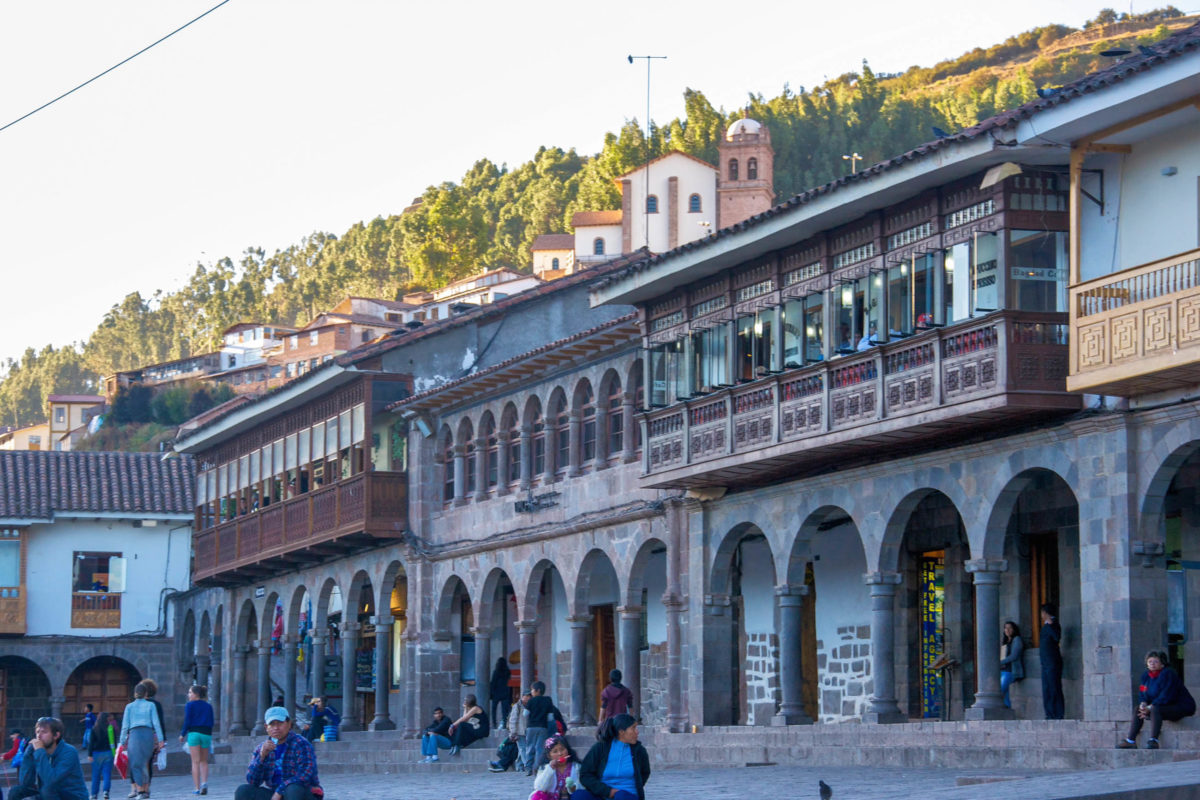
Cusco ist ein kurioser Mix aus perfekten Inkamauern und spanischen Kolonial-Palästen. Nachdem die damals Tahuantinsuyo genannte Inka-Hauptstadt im November 1533 an die Spanier fiel, wurden viele Heiligtümer zerstört und Unmengen von Gold und Silber nach Spanien abtransportiert.
Dennoch beeindruckt von der Baukunst der Inka errichteten die Conquistadores auf den verbliebenen Fundamenten ihre eigenen Paläste, Kirchen und Klöster in der Neuen Welt. Damit entstand die einmalige Architektur in der Altstadt von Cusco, die seit 1983 auf der Liste des UNESCO-Weltkulturerbes steht und sich ihren ursprünglichen Charme bewahren konnte.
Inka-Ruinen und Inka-Museen in Cusco
Die meisterhafte Baukunst der Inka ist trotz der Zerstörungswut der Spanier in Cusco immer noch sichtbar. Besonders berühmt ist die Calle Hatunrumiyoc. Hier steht noch die Mauer des ehemaligen Palastes von Inca Roca, die nahtlos aus riesigen Steinen mit bis zu 12 Ecken zusammengesetzt wurde.
Ebenfalls ein Inka-Zeugnis ist die Callejón de Siete Culebras, die mit steinernen Reptilien verzierte „Gasse der sieben Schlangen„, die nach dem Glauben der Inka für Weisheit standen.
Ansonsten sind Funde aus Machu Picchu und andere Vermächtnisse des Inka-Reiches in diversen Museen von Cusco ausgestellt. Inka-Interessierte sollten vor allem das Museo Inka und das Museo Machupicchu Casa Concha besuchen.
Die anderen präkolumbianischen Kulturen Perus, unter anderem die Mochica, Chimú und Nazca, werden im Museo de Historia Regional vorgestellt.
Plaza de Armas
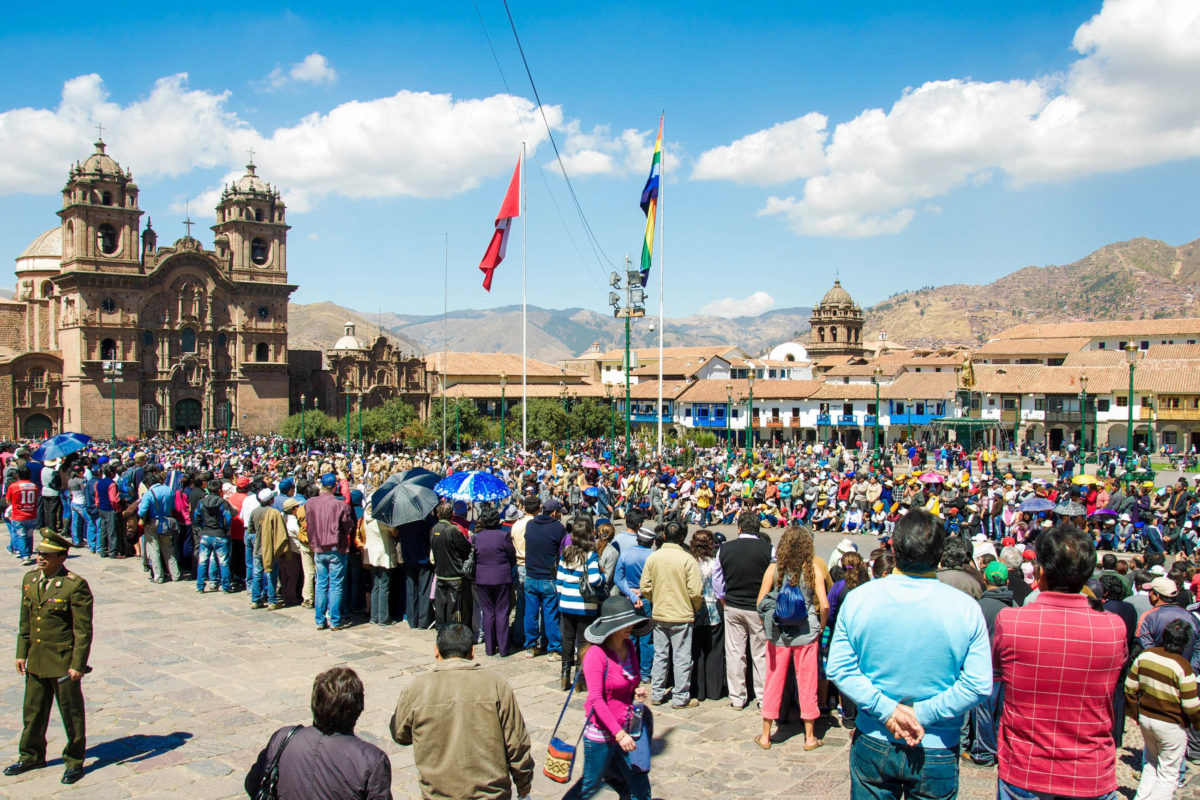
Typisch für Perus Städte heißt auch in Cusco der zentrale Platz Plaza de Armas, auch Plaza Mayor genannt. Im Schatten prachtvoller Kolonialkirchen servieren nette Cafés heiße Schokolade und Straßenhändler bieten Souvenirs und Kitsch feil. Der Plaza de Armas eignet sich perfekt als Ausgangspunkt für eine Sightseeing-Tour durch das historische Zentrum von Cusco und beherbergt selbst einige von Cuscos Top 10 Sehenswürdigkeiten.
Tipp: Souvenirs sind in Cusco um einiges günstiger als in Machu Picchu, allerdings immer noch teurer als in Puno! Die beste Adresse für nette Andenken ist der Kunstmarkt in der Avenida del Sol, Ecke Tullumayo.
Kathedrale von Cusco

Die gewaltige Kathedrale von Cusco ist eine der größten Kirchen Amerikas und dominiert die Nordostseite des Plaza de Armas. Sie kann über den linken Seiteneingang betreten werden und beeindruckt mit einem kostbaren silbernen Hochaltar und einem prächtig geschnitzten Chorgestühl. Im linken Glockenturm der Kathedrale von Cusco hängt die mit einem Gewicht von 6 Tonnen größte und schwerste Glocke Südamerikas.
Iglesia La Compañía de Jesús
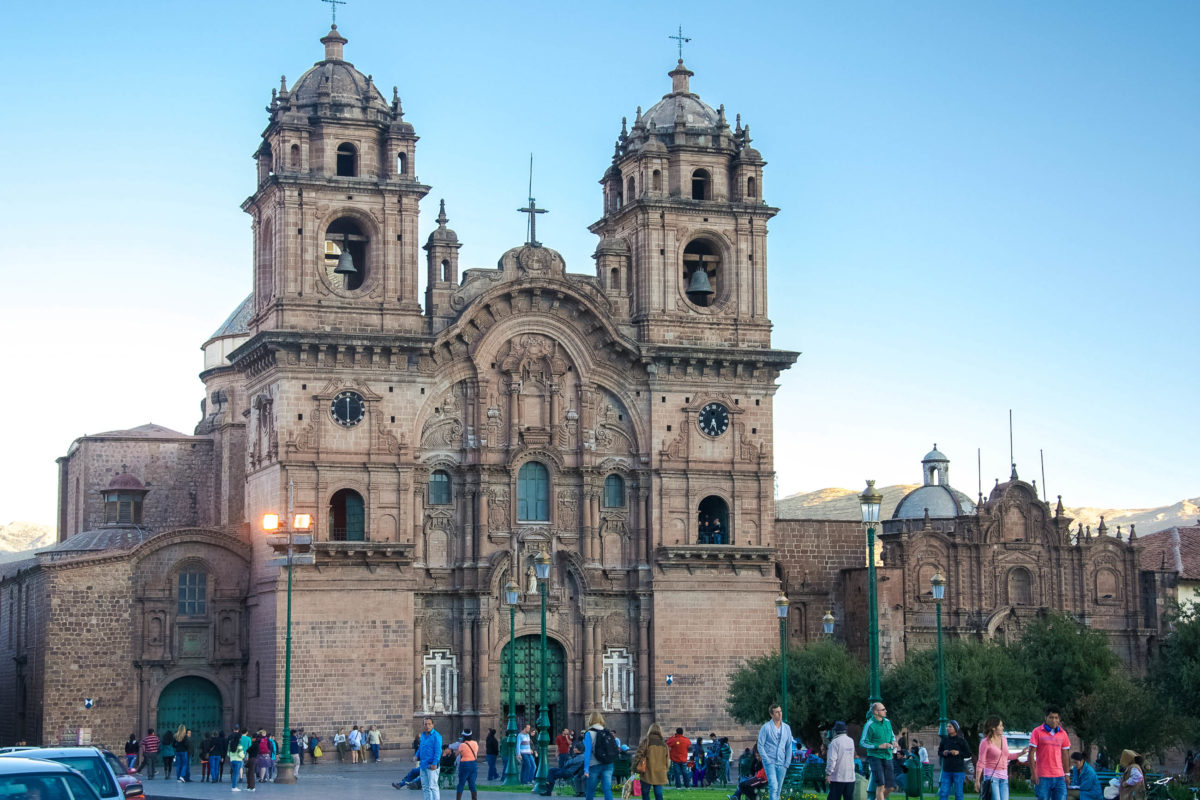
Die Kirche des Jesuitenordens liegt gleich neben der Kathedrale von Cusco und steht ihr in Pracht und Prunk keineswegs nach – im Gegenteil. Die wohl schönste Barock-Kirche in Cusco wurde im späten 16. Jahrhundert sogar extra errichtet, um die Kathedrale zu übertrumpfen und löste sogar einen Kirchenstreit aus.
In der benachbarten ehemaligen Universität des Jesuitenordens ist heute das Naturhistorische Museum von Cusco untergebracht.
Artikel: Iglesia La Compañía de Jesús
Basilika La Merced

Nach der Kathedrale von Cusco und der Iglesia La Compañia de Jesús ist die Basilika La Merced die wichtigste und eindrucksvollste Kirche von Cusco. Sie liegt einen Häuserblock südlich des Plaza de Armas und beeindruckt durch ihre meisterhaften Gemälde und den kostbaren Kirchenschatz mit einer unbezahlbaren 22kg schweren Monstranz.
Artikel: Basilika La Merced in Cusco
Fotogalerie: Basilika La Merced in Cusco
Kloster Santa Catalina

Im ehemaligen Kloster westlich des Plaza de Armas ist heute ein Museum für religiöse Kunst untergebracht. Es präsentiert neben der Geschichte und Kultur von Frauenklöstern in Cuzco auch eine der wichtigsten indianisch-spanischen Kunstsammlungen in Cusco. Auch die koloniale Architektur des Santa Catalina Klosters ist mit bemalten Bogengängen, barocken Fresken und schmucken Arkaden einen Besuch wert.
Tempel von Coricancha und Konvent Santo Domingo

Auf den Überresten der allerheiligsten Stätte der Inka, dem Tempel des Sonnengottes, thront heute das Konvent Santo Domingo. Überlieferungen zufolge wurde die bedeutende Zeremonien-Stätte in der Avenida del Sol für Hochzeiten, Begräbnisse und andere Rituale der Inka genutzt und war über und über mit purem Gold, Silber und Edelsteinen besetzt.
Die Reichtümer des Coricancha-Tempels wurden von den Spaniern geraubt, das einzige, was von den Inka heute noch übrig ist, sind 4 Kammern des Original-Tempels mit architektonisch perfekten Inka-Mauern.
Artikel: Tempel Coricancha in Cusco
Künstlerviertel und Kirche von San Blas
Die farbenprächtigen Fensterrahmen und die geschnitzten Balkone vor hellen Lehmfassaden sind vor allem im Künstlerviertel San Blas zu bewundern. Zwischen kleinen Ateliers und gemütlichen Cafés drängt sich außerdem ein Souvenirladen an den anderen, in dem peruanisches Kunsthandwerk verkauft wird.
Die Kirche von San Blas stammt aus dem Jahr 1544 und ist die älteste Kirche von Cusco. In ihrem Inneren lohnt sich ein Blick auf die geschnitzte Kanzel – sie soll die schönste Holzarbeit in ganz Cusco sein.
Markt von San Pedro
Ebenfalls eine gute Adresse zum Shoppen ist der Markt von San Pedro rund 8 Gehminuten südlich vom Plaza Mayor. Statt Kunsthandwerk gibt es hier allerdings Essbares zu erstehen. Wer sich durch die typische Küche von Peru kosten möchte, ist hier richtig.
Schon auf dem Weg dorthin gibt es am Straßenrand Nüsse, Popcorn und Trockenfrüchte zu kaufen. Zur Auswahl stehen vielfältige Lebensmittel aus der Region, frischgepresste Säfte und ganze Menüs – natürlich immer im authentisch-chaotischen Markttreiben von Cusco.
Beste Reisezeit für Cusco
Cusco liegt auf über 3.400 Metern Seehöhe, richtig heiß wird es hier also nie. Die Tageshöchstwerte liegen das ganze Jahr über um die 20 °C. Die beste Zeit, um Cusco zu besuchen sind die Sommermonate von Mai bis September. Dann gibt es die meisten Sonnenstunden und die geringsten Niederschläge. Auch im April und Oktober kann das Wetter noch trocken und warm sein.
Klimatabelle Cusco

Anreise nach Cusco

Die Anreise nach Cusco erfolgt entweder mit dem Flugzeug über den internationalen Flughafen Alejandro Velasco Astete oder mit dem Bus. Unzählige Langstrecken-Busse fahren im Prinzip von überall in die Königsstadt, nach dem Motto „Alle Wege führen nach Cuso“. Mit der Bahn PeruRail geht es von Cusco weiter nach Puno und Machu Picchu.
Boleto Turistico – die Eintrittskarte in die Inka-Welt
Als Eintrittskarte zu den Sehenswürdigkeiten Cuscos und den faszinierenden Inka-Stätten in seiner Umgebung benötigen Peru-Reisende das Boleto Turistico. Das Touristen-Ticket kann im Tourismusbüro oder online erstanden werden und ist entweder für einen Tag oder gleich für 10 Tage gültig.
BILDER: Die Top 10 Sehenswürdigkeiten von Cusco
Fotogalerie: Königsstadt Cusco
Ausflüge von Cusco
Rund um die Perus Königsstadt liegen unzählige weitere sehenswerte Inka-Stätten, für deren Erkundung sich Cusco als Basis anbietet.
Sacsayhuamán
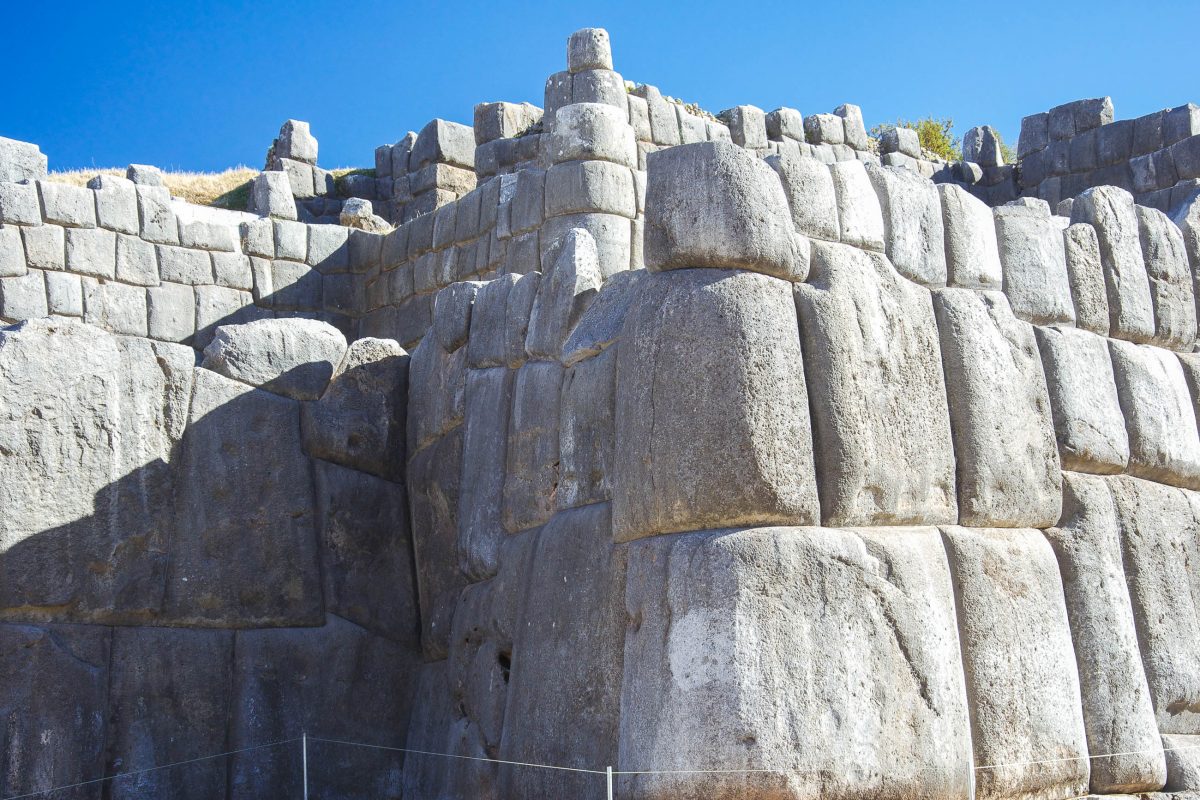
Der von Cusco nächstgelegene interessante Ort ist Sacsayhuamán mit der schneeweißen Christusstatue Cristo Blanco. Die eindrucksvolle Ruinenstadt drei Kilometer nördlich von Cusco zeigt auf eindrucksvolle Weise die millimetergenaue Arbeit der Inka-Baumeister und zählt gemeinsam mit der Altstadt von Cusco zum Weltkulturerbe der UNESCO.
Kenko

Bereits im Valle Sagrado, dem Heiligen Tal der Inka auf dem Weg nach Ollantaytambo und Machu Picchu, liegt die geheimnisvolle Kultstätte Kenko, der mythologische Eingang zur Unterwelt. Glatt geschliffene Wände und Steinblöcke mit zahlreichen Rinnen und verwinkelten Spalten zeugen von den rituellen Zeremonien der Inka-Priester.
Rund 8km nördlich von Cusco liegen das Wasserheiligtum Tambomachay und die kleine Bergfestung Puka Pukara.
Tipp: Wer mit dem Taxi nach Tambomachay fährt, kann als Tagesausflug über Pukapukara, Kenko und Sacsayhuamán wieder zurück nach Cusco marschieren.
Inka-Stadt Pisac
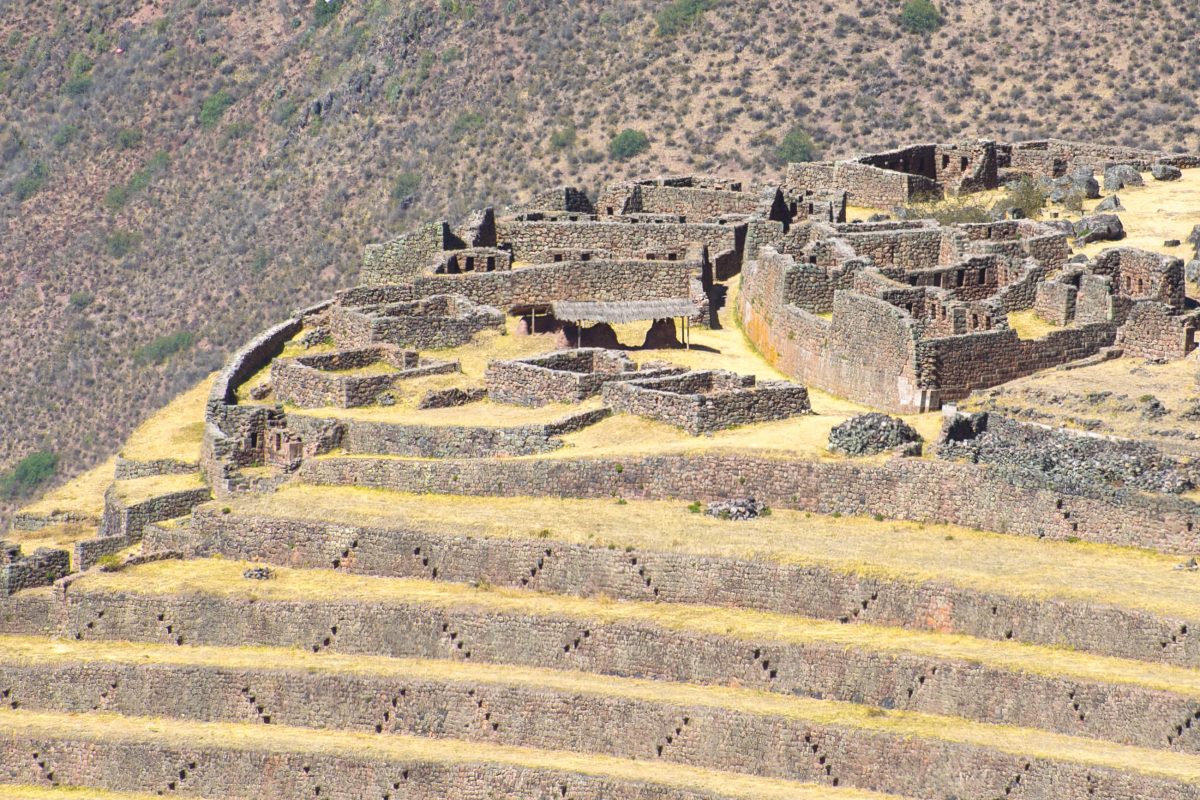
Pisac liegt eine knappe Autostunde nordöstlich von Cusco bereits im Valle Sagrado, dem berühmten Heiligen Tal. Auf seinen unzähligen Terrassen wird heute noch Landwirtschaft betrieben.
Bekannt ist Pisac außerdem für seinen Lebensmittel- und Kunsthandwerks-Markt, der jeden Dienstag, Donnerstag und Sonntag stattfindet. Es geht hier zwar ziemlich touristisch zu und die Preise sind zum Teil exorbitant, dennoch ist das farbenprächtige Spektakel einen Besuch wert.
Chinchero

Auch nach Chinchero dauert die Fahrt von Cusco knapp eine Stunde, allerdings nach Nordwesten, Richtung Machu Picchu. In diese noch völlig ursprünglich gebliebene Kleinstadt locken ebenfalls Vermächtnisse der Inka und der Sonntagsmarkt der traditionell gekleideten Bewohner.
Zusätzlich gibt es im ehemaligen Sommersitz der Inka-Könige eine koloniale Kirche und den sensationellen Ausblick über die schneebedeckte Cordillera Vilcabamba zu bestaunen.
Weiterführende Links:





